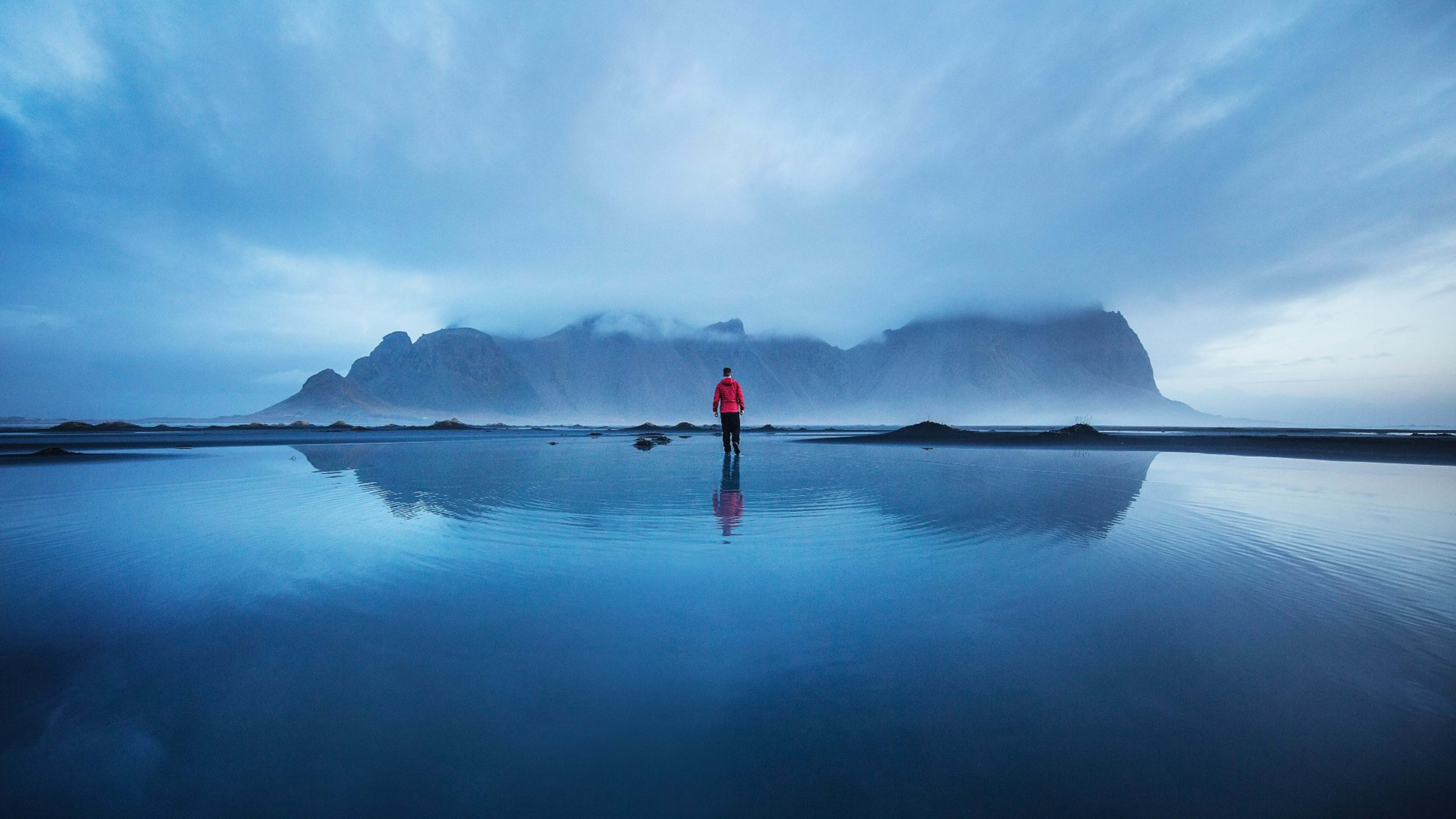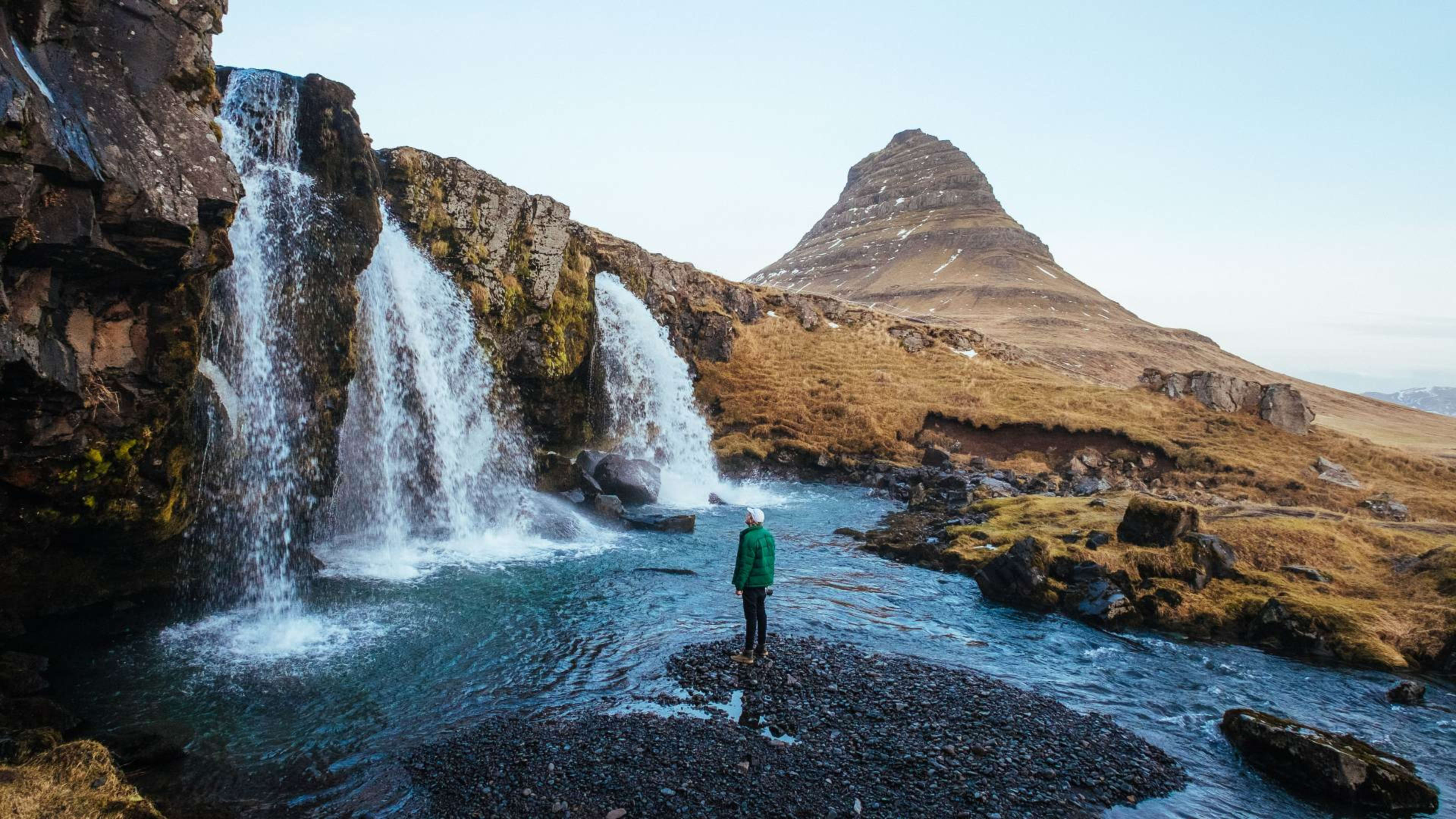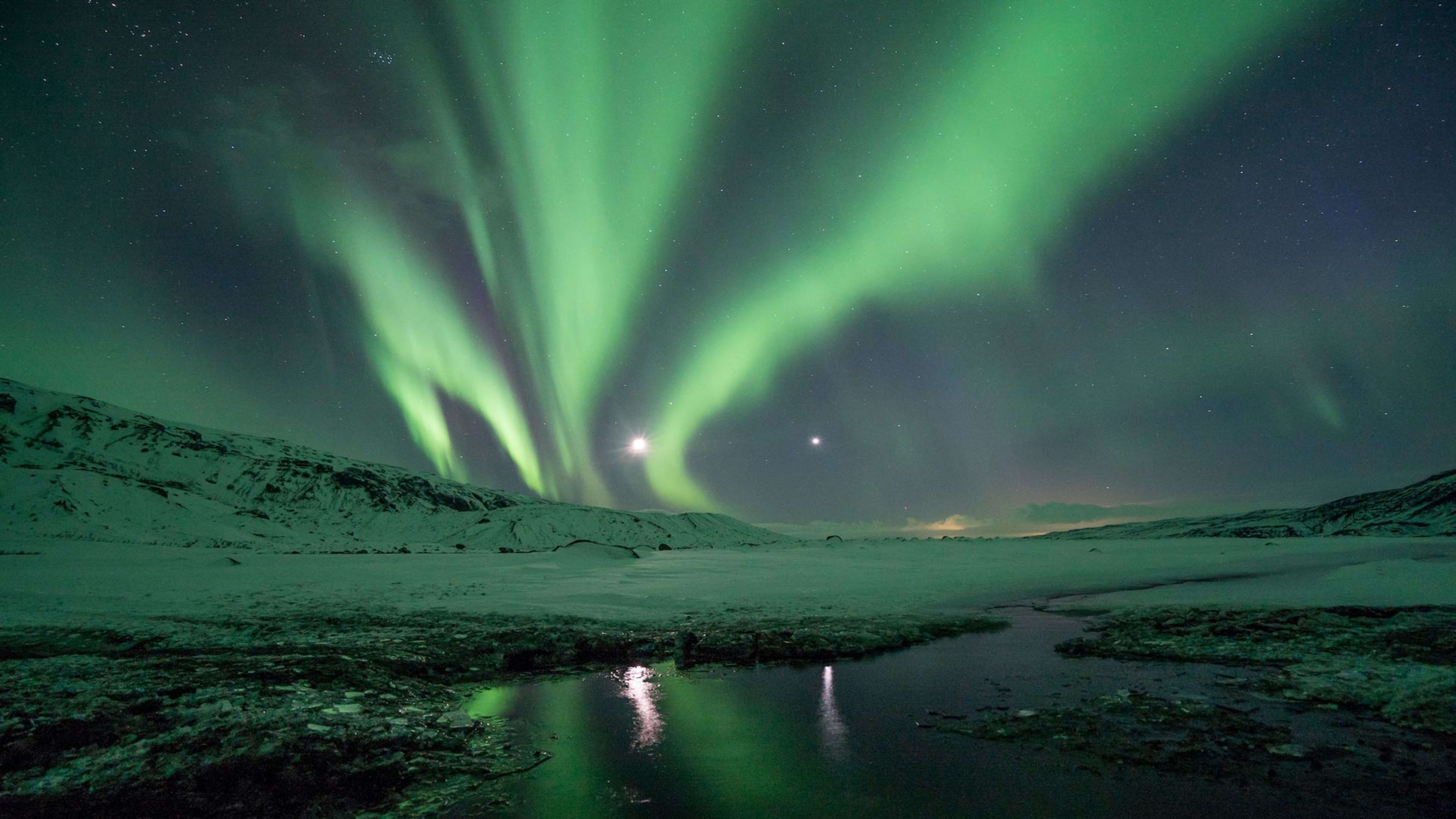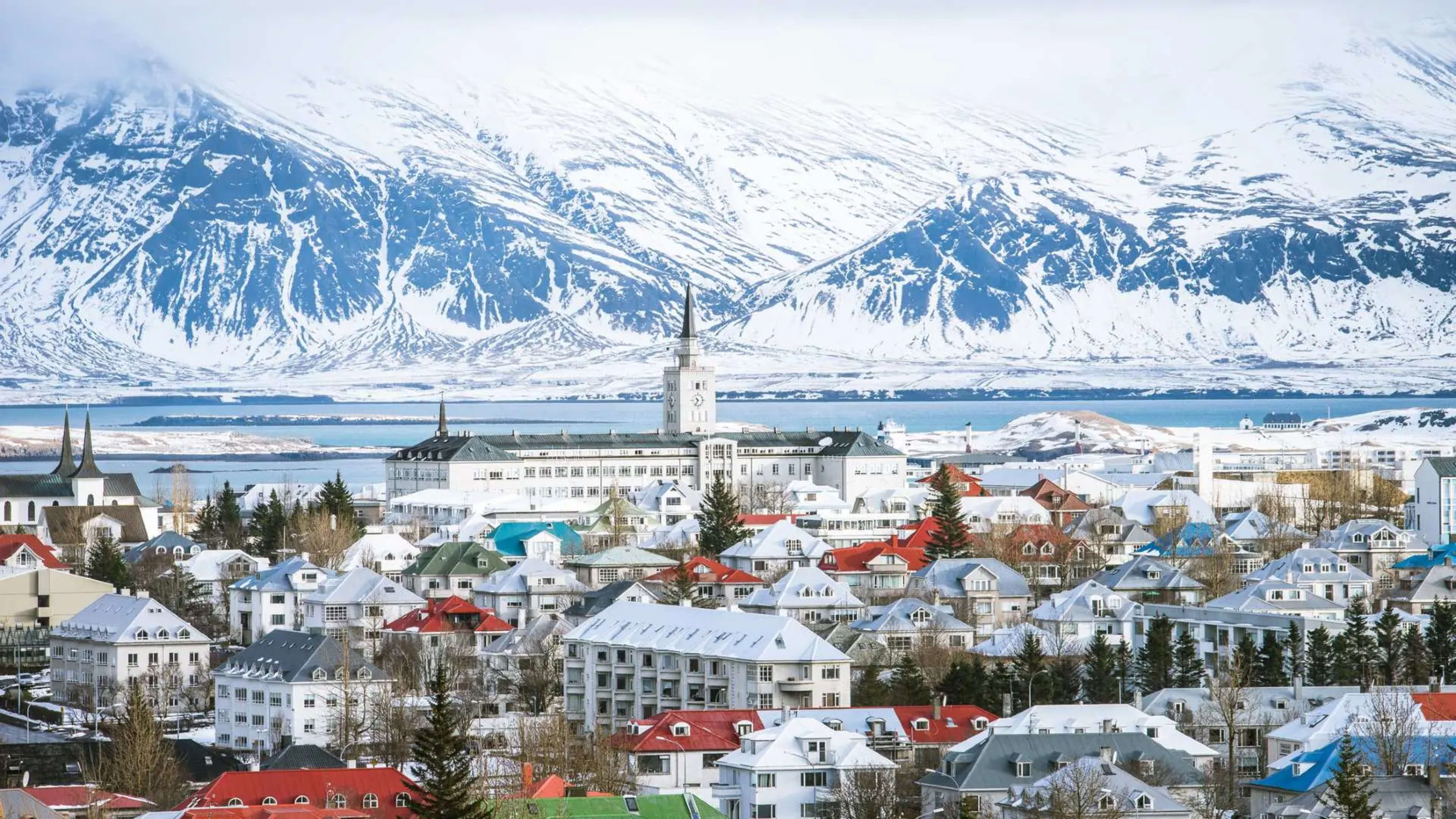Picture rugged glaciers and rumbling volcanoes, deep fjords and mysterious black-sand beaches. Visit Iceland from the UK and discover this breathtaking wilderness right on your doorstep.
It might be geographically close, but the Land of Fire and Ice is packed full of surprises and wonders. See geysers firing boiling jets of water high into the sky. Glimpse the otherworldly Northern Lights. Or sample some truly unique delicacies you won’t find at home (fermented shark, anyone?).
Before you do, though, get clued up on the practical info you need to know. Read on to find the answers to all your questions about travelling to Iceland from the UK.
- Explore these Iceland holidays from the UK to plan your trip.
1. How do I get to Iceland from the UK?
The only way to reach Iceland directly from the UK is by plane. That said, travelling to Iceland is really easy, with flights from across the UK taking you to Keflavík airport, Iceland’s international travel hub.
From England, you can choose from regular connections from London, including Gatwick, Heathrow, Luton, and Stansted, or from Bristol or Manchester. Or, if you’re in Scotland, you’ll find planes to Iceland from Edinburgh and Glasgow.
When you book with Iceland Tours, flights aren’t included in your package. That means you’ll have more flexibility on where you fly from and how much you pay. You can find cheap flights at Icelandair, easyJet, Play, British Airways, Jet2 and WizzAir.
How far is Iceland from the UK?
At their closest points, the distance between Iceland and the UK is less than 500 miles (about 790 kilometres). But if you’re travelling from further south, the distances are a little longer. It’s about 850 miles (1,350 kilometres), depending on where you measure from.
How long is the flight to Iceland from the UK?
The length of your flight between Iceland and the UK depends on where you’re flying from.
If your flight leaves Heathrow, it’ll take about 3 hours 15 minutes to reach Keflavík. But a connection from Edinburgh to Keflavík will be a little shorter, about 2 hours 30 minutes.
Flight times to Iceland from the UK
From other airports, you can expect these flight times:
- From Bristol to Keflavík: 3 hours 10 minutes
- From Manchester to Keflavík: 2 hours 50 minutes
- From Glasgow to Keflavík: 2 hours 25 minutes
What’s the time difference between Iceland and the UK?
The time difference between Iceland and the UK changes between summer and winter. In the winter, the two countries are in the same time zone. But Iceland doesn’t change its clocks like the rest of Europe. That means that in summer Iceland is an hour behind.
2. What do I need to visit Iceland from the UK?

What you need to pack for Iceland will change based on when you’re visiting and what you’re going to get up to. But in any season, you’ll find warm clothes, waterproof layers, and sturdy shoes are always a good idea.
What’s more, it’s always smart to check entry requirements and restrictions before you travel. Read on to find the answers.
What are Iceland’s passport requirements from the UK?
If you’re visiting Iceland from the UK, check if your passport meets the requirements first. There are two things to look out for:
- Your passport should be issued no more than 10 years before you enter Iceland
- It should expire no more than 3 months after the day you plan to leave.
By the way, expect your passport to be stamped at Iceland’s border when you enter and leave.
Do UK citizens need a visa for Iceland?
Most people who travel to Iceland from the UK won’t need a visa. But if you’ve been on a lot of trips to Europe lately, it’s worth checking how long you’ve been away, as this can affect your right to enter.
That’s because Brits can travel visa-free in Iceland and other countries in the Schengen area for a total of 90 days in every 180 days. That includes the whole length of your stay in Iceland. If you want to stay longer than 90 days, you will need a visa.
Find out more on the UK Government’s guide to entry requirements to Iceland. Or, if you need a visa, check with the Icelandic government what you need to do.
Can I drive in Iceland with a UK licence?
Unless you’re living in Iceland, there’s no need for any additional paperwork to hire a car in Iceland. As a tourist, you can simply use your UK driving licence as is.
What adapter do I need for Iceland from the UK?
Iceland uses the standard Europlug socket, that fits plugs with two round prongs. The adapter you’ll need is usually called a Northern European adapter or a type “C” or “F”.
3. What’s it like visiting Iceland from the UK?
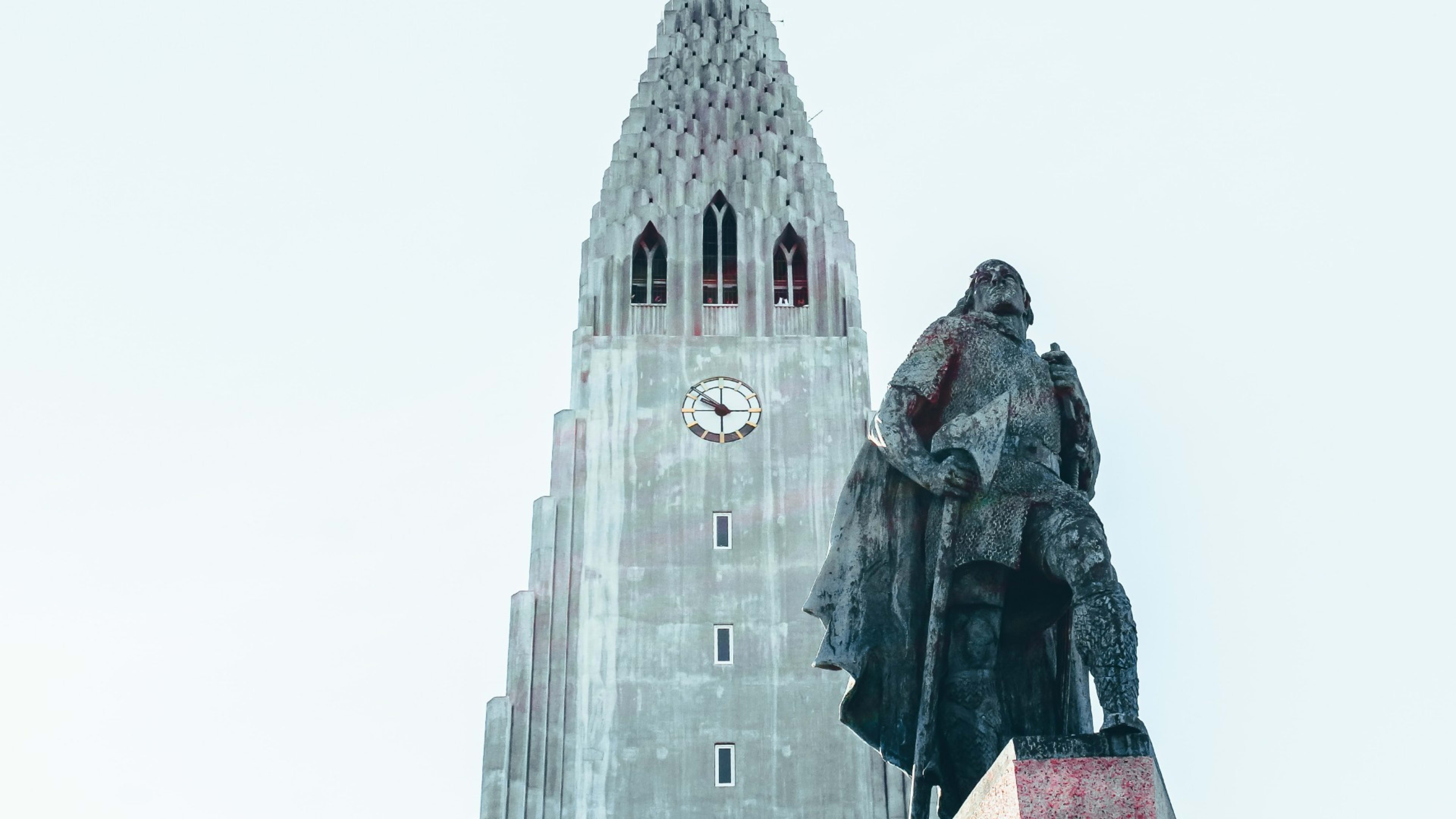
If you’ve never visited Iceland before, you’ll find it both familiar and surprisingly different.
Most people speak English, and you’ll feel right at home in Reykjavík’s cafes and bars. Icelanders are friendly and welcoming, although they may seem a little reserved at first. Once they open up though, you’ll find that they have a dry sense of humour just like the Brits.
Iceland’s landscapes, architecture, and traditional local food will make you feel like you’re in a fascinating new world.
How big is Iceland compared to the UK?
Iceland is a lot smaller than the UK, by pretty much any way you measure it.
It covers an area of about 103,000 sq km (39,600 sq mi), which is slightly smaller than England at 130,000 sq km (50,300 sq mi). Meanwhile the whole of the UK is 243,610 sq km (94,060 sq mi).
The population of Iceland is 372,000, while the UK’s is 67 million. To put it in context, the size of Iceland’s population is roughly the same as that of Cardiff.
What Iceland lacks in size, it more than makes up for in pure wonder. With vast open spaces and a tiny population, it feels a lot bigger than it is.
How expensive is Iceland compared to the UK?
You may have heard Iceland’s reputation for being a quite expensive country. According to one estimate, Iceland is the fourth most expensive country in the world, compared to the UK in 27th place.
That said, there are plenty of ways to enjoy the country without worrying about money. You could try camping during the summer months, or visit in the off-season, when prices tend to be lower.
What’s the weather like in Iceland?
As a nation at the edge of the Arctic Circle, Iceland can get cold. But if you’re coming from the UK, it might not be as cold as you think.
In Reykjavík during winter, expect average lows of -2°C (28.4°F). It can get a lot colder, but that’s not so common. Most of the time, Iceland’s winter weather is comparable to what you’d experience in the Scottish Highlands.
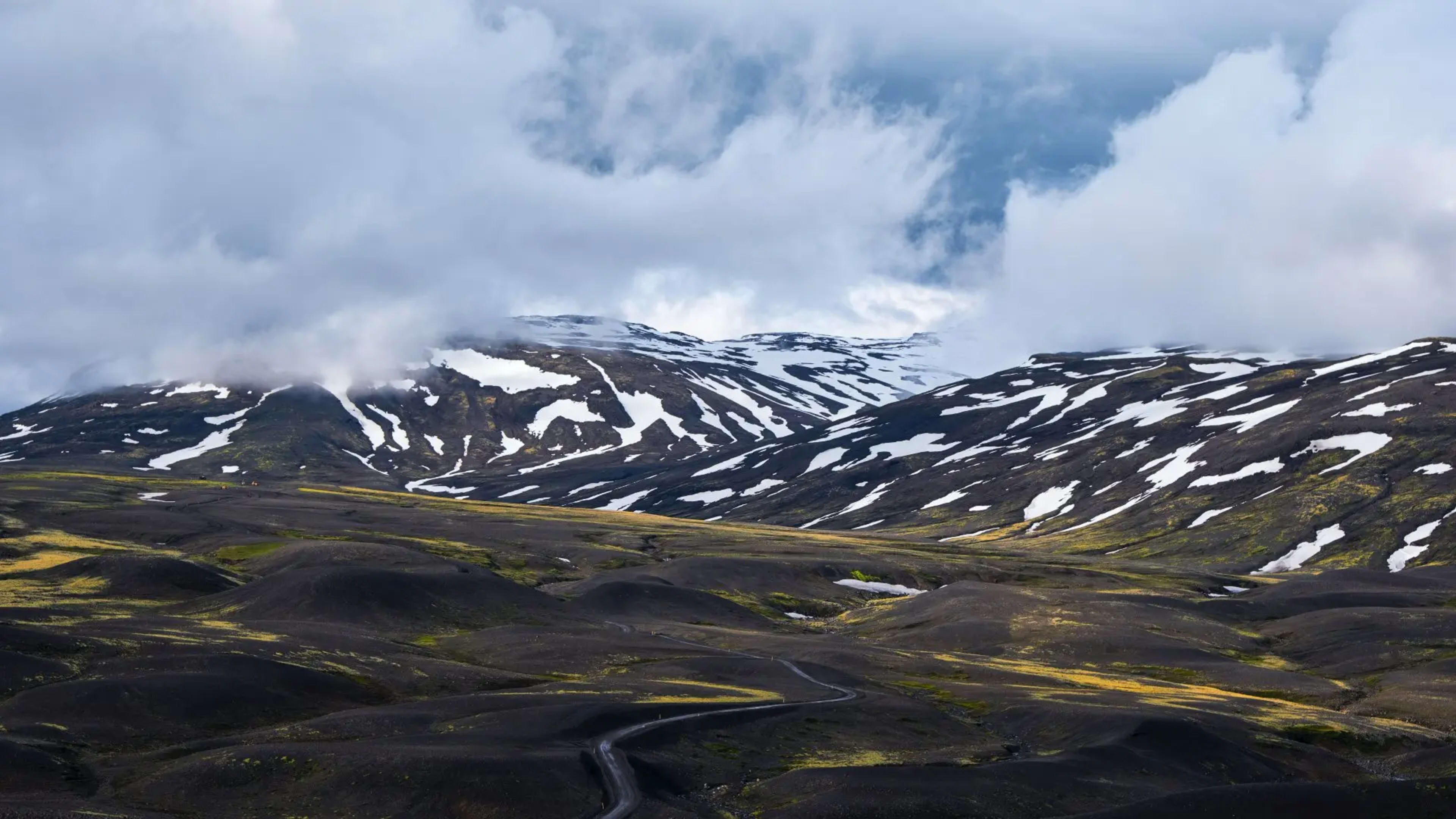
Meanwhile, in summer, you can see temperatures rise as high as 20°C (68°F). If there’s a sea breeze though, it can often feel cooler than the thermometer suggests. With this in mind, make sure you pack a windproof outer layer.
The thing about Iceland’s weather (a bit like in the UK) is that it’s very changeable. You can experience every season – from snow to sunshine and gusty winds – in a single day. For enjoyable and safe travel, it’s best to be prepared and pack well!
If you’re planning to visit in winter, check out this handy packing guide so you don’t forget any essentials.
4. When should I visit Iceland and what should I do?
The best time to visit Iceland will be decided by what you want to do when you get here. The country offers everything from outdoor adventures and wildlife tours to cultural treasures and spa experiences.
When is the best time to visit Iceland?
It’s always a good time to visit Iceland. But what you can do here will change from season to season.
For example, summer’s great for discovering Iceland’s wildernesses and national parks. At this time, the snow has retreated, opening up the whole country for you to explore. It’s also a great time for a whale watching tour, as many species of whale return to Iceland’s waters.
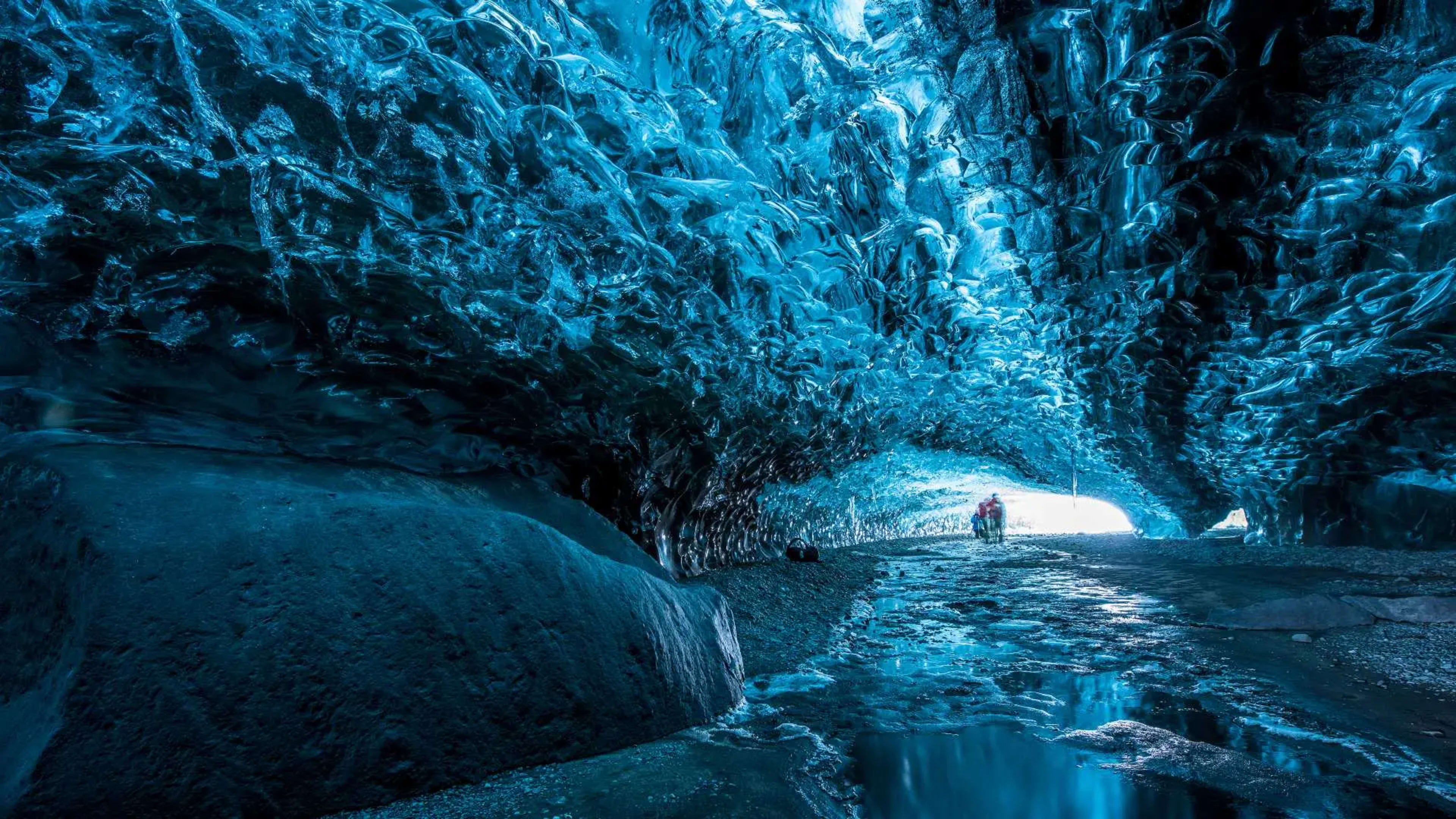
You’ll find Iceland in winter has its own joys too. See the Northern Lights, with its gorgeous colours against the dark winter sky. Or visit Iceland’s ice caves, for a different perspective on this pristine snowy landscape.
Spring in Iceland is the low season, when visitors are fewer and nature is blossoming. You’ll see that it’s a brilliant time for a road trip, particularly as prices are a little lower.
What are the best things to do in Iceland?
There’s so much to get up to on a visit to Iceland, whatever season you visit:
- Relax in the soothing waters of the Blue Lagoon
- Take a road trip around Iceland’s jaw-dropping Ring Road
- Explore glaciers and waterfalls on the south coast
- See geothermal wonders and historical sites around the Golden Circle
- Try Icelandic food or sample cosy café culture in Reykjavík
- Go whale watching or puffin spotting on a wildlife tour
- Venture into Iceland’s rugged and remote highlands
- Visit ice caves and lava tunnels to see Iceland’s fascinating geology
- Stroll along cliff-tops or black-sand beaches on the Snæfellsnes peninsula
- Marvel at the Northern Lights.
Find out more in our complete guide to Iceland.
- Related: How long do you need in Iceland?
Explore the best of Iceland with Iceland Tours
Visit Iceland from the UK and discover a world of vast glaciers and enchanting beaches, snow-topped mountains and magical waterfalls. Whatever your travel plans, it promises a holiday you’ll never forget.
If you prefer exploring alone, a self-drive tour of Iceland could be for you. Alternatively, on a group tour, you’ll share your experience with like-minded travellers.
At Iceland Tours we make your trip easy. Book a travel package with us and we’ll take care of your accommodation, travel within Iceland, and any added extras. Explore our holidays from the UK today. All you need is a 5% deposit to secure your booking.

